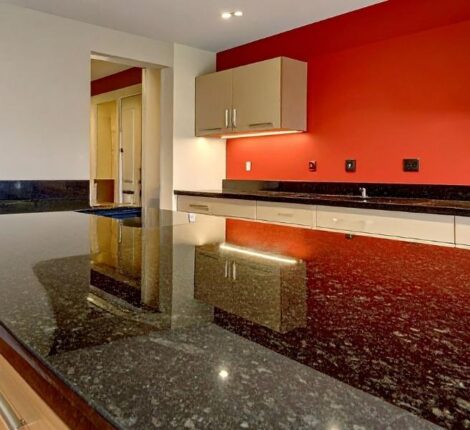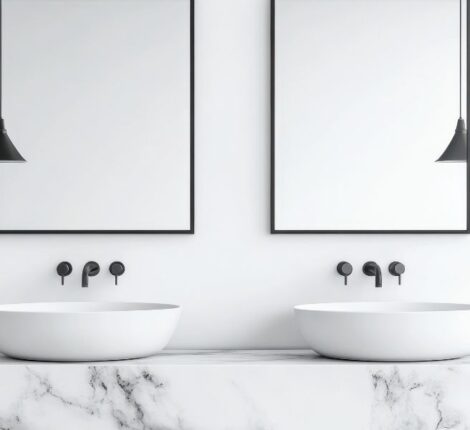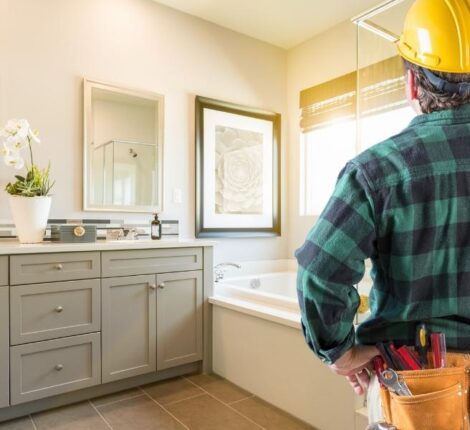- In: Blog
- By: southpointkb
- Date: September 12, 2024
-
- 0
- 10246
Tips for Preventing Mold in Your Bathroom Cabinets
Mold in bathroom cabinets is a common issue for many homeowners. The combination of humidity, poor ventilation, and dark spaces creates the perfect breeding ground for mold to thrive. Left unchecked, mold can damage cabinets, cause unpleasant odors, and even pose health risks. However, with the right preventive measures, you can keep your bathroom cabinets mold-free and maintain a clean, healthy bathroom environment.
1. Ensure Proper Ventilation
The primary cause of mold in bathrooms is excess moisture, and ventilation is key to reducing humidity. Installing an exhaust fan is one of the most effective ways to combat this issue. The fan should be powerful enough to remove moisture from the air during and after showers or baths. Make sure to run the fan for at least 20-30 minutes after using the bathroom to allow any remaining humidity to dissipate. Regularly clean the fan to ensure it is working at full capacity.
Additionally, leaving windows open after bathing can help circulate fresh air and allow trapped moisture to escape. If you don’t have a window, a dehumidifier can serve as a reliable alternative, pulling moisture out of the air and maintaining a balanced humidity level.
2. Seal Bathroom Cabinets Properly
A well-sealed cabinet is less likely to absorb moisture. If your cabinets are made of wood, they are especially prone to swelling and mold growth if exposed to water over time. Applying a water-resistant sealant to wooden cabinets provides a protective barrier, reducing the likelihood of mold development. This step is especially important in older cabinets that may not have been treated with water-resistant materials.
Ensure that the sealant is applied not only to the outer surfaces but also to the interior of the cabinet, especially around areas where water may drip or collect. Regular maintenance, such as reapplying sealant every few years, will further extend the life of your cabinets and prevent mold.
3. Declutter and Organize Cabinets
Clutter in bathroom cabinets can trap moisture, creating hidden spaces where mold can develop. Overcrowded cabinets also restrict airflow, which contributes to increased humidity. To prevent this, regularly clean and organize the contents of your bathroom cabinets. Use storage containers to keep items tidy and reduce the chance of moisture accumulating around bottles or toiletries.
In addition, check for leaks or spills from items such as shampoos, lotions, or cleaners that can seep into the wood and contribute to mold growth. Wipe down containers and shelves frequently to avoid moisture buildup.
4. Wipe Down Surfaces After Use
After using the bathroom, it’s important to take a few minutes to dry any surfaces that have come into contact with water. This includes countertops, cabinet surfaces, and even the interior of the cabinets if they’ve been exposed to moisture. Keeping the area dry will significantly reduce the risk of mold developing.
Using a microfiber cloth is an excellent way to absorb water without leaving streaks or lint behind. Microfiber is also gentle on surfaces and can be used daily without causing wear and tear on cabinet materials.
5. Use Moisture-Absorbing Products
Sometimes, despite your best efforts, moisture may still accumulate in bathroom cabinets. In such cases, moisture-absorbing products can help keep humidity levels in check. Silica gel packets, activated charcoal, or dehumidifying crystals are all effective at absorbing excess moisture in small spaces like cabinets.
Place these products in the corners of your bathroom cabinets and replace them regularly to ensure they are effective. For a more natural approach, you can also use baking soda or cat litter, both of which absorb moisture effectively and can be refreshed easily.
6. Address Leaks Immediately
Leaking pipes, faucets, or plumbing fixtures can lead to moisture buildup in bathroom cabinets. Even a small, slow leak can create the perfect environment for mold to thrive. Regularly inspect the plumbing beneath your sink for signs of leaks, such as water stains, dripping, or pooling water.
If you notice any leaks, address them immediately. Delaying repairs can not only cause mold growth but also lead to further damage to your cabinets and surrounding structures. In some cases, it might be worth consulting a professional plumber to ensure that your bathroom is free of leaks and that everything is properly sealed.
7. Maintain Regular Cleaning Habits
Prevention is always better than remediation. Establishing a regular cleaning routine for your bathroom, including the cabinets, is crucial for mold prevention. Use mild cleaning products to wipe down both the interior and exterior of cabinets. Avoid using harsh chemicals that could damage cabinet finishes or leave residue behind.
Disinfecting wipes or a solution of vinegar and water are good options for cleaning surfaces, as they are gentle yet effective at killing mold spores. Be sure to reach into corners and crevices where mold can easily hide. Regular cleaning prevents moisture from settling and ensures that any potential mold growth is caught early.
Keeping mold out of your bathroom cabinets requires consistent effort, but the payoff is well worth it. By ensuring proper ventilation, sealing cabinets, addressing leaks, and adopting good cleaning habits, you can maintain a fresh, mold-free space that will last for years. If you’re ready to upgrade your bathroom and ensure that it’s as functional as it is beautiful, work with Southpoint Kitchen & Bath. Our team can help you create a customized, mold-resistant bathroom that suits your needs.




